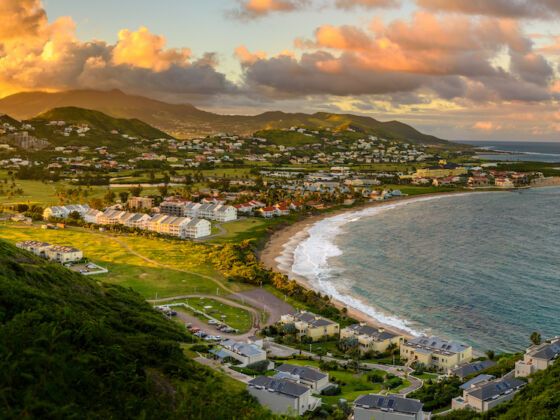[Editor’s note: Christina’s trip to St. Kitts was sponsored and arranged by St. Kitts Marriott Resort. All opinions are her own.]
1. From a volcano
“Remember, we aren’t goin’ shoppin’,” our guide, O’Neil, says in his Kittitian accent. “Do you have any physical or other problems I need to know about before we get started?” he continues, pulling a stack of walking sticks from underneath the seat of his Land Rover.
